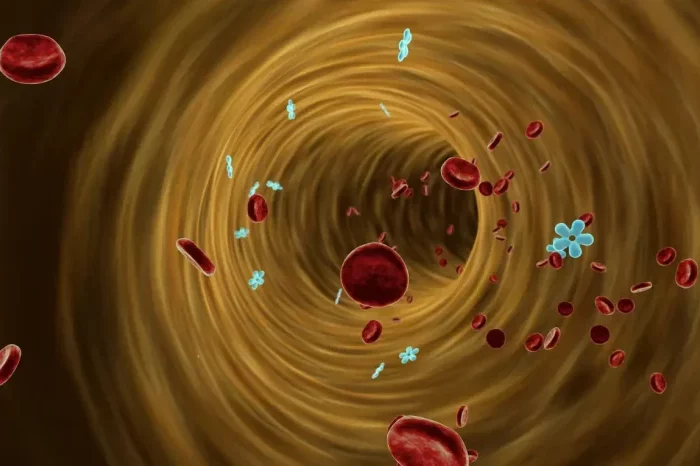Diabetes management has undergone significant advancements over the years, transitioning from rudimentary urine tests to sophisticated blood glucose monitors. Despite these advancements, the quest for a non-invasive glucose monitoring solution remains a top priority for both patients and healthcare providers. This article delves into the current state of non-invasive glucose monitors, exploring the technology behind them, their potential benefits, and the challenges they face.
The Evolution of Glucose Monitoring
For decades, blood glucose monitoring has been a cornerstone of diabetes management. Traditional methods involve pricking the finger to obtain a blood sample, which is then analyzed using a glucose meter. While effective, this method is often painful and inconvenient, leading to reduced compliance and suboptimal diabetes control.
Continuous glucose monitors (CGMs) have revolutionized diabetes care by providing real-time data on glucose levels through a sensor inserted under the skin. Despite their efficacy, CGMs still require periodic calibration with blood-based measurements and involve invasive sensor insertion.
The desire for a truly non-invasive glucose monitoring system has driven research and development in this field, aiming to eliminate the need for blood samples and enhance patient comfort and compliance.
Non-Invasive Glucose Monitoring Technologies
Non-invasive glucose monitoring technologies aim to measure glucose levels without penetrating the skin. These technologies typically rely on the detection of glucose in interstitial fluid, sweat, saliva, or other body fluids, using various methods such as optical, electromagnetic, and thermal sensing. Below are some of the most promising approaches:
- Optical Sensing Optical methods use light to measure glucose levels. This approach includes techniques like near-infrared (NIR) spectroscopy, Raman spectroscopy, and fluorescence. These methods rely on the interaction between light and glucose molecules, where specific wavelengths of light are absorbed or scattered differently by glucose.
- Near-Infrared Spectroscopy (NIR): NIR spectroscopy measures the absorption of near-infrared light by glucose molecules. This method has shown potential due to its ability to penetrate the skin and measure glucose in the interstitial fluid. However, challenges such as interference from other biological substances and the need for precise calibration have hindered its widespread adoption.
- Raman Spectroscopy: This technique measures the scattering of light by glucose molecules. Raman spectroscopy offers high specificity and sensitivity but requires sophisticated equipment and calibration, making it less practical for everyday use.
- Fluorescence Technology: Fluorescence-based sensors use fluorescent dyes that bind to glucose molecules. The change in fluorescence can be measured to estimate glucose levels. While promising, issues related to the stability and biocompatibility of fluorescent dyes need to be addressed.
- Electromagnetic Sensing Electromagnetic methods involve the use of radio waves, microwaves, or electromagnetic fields to measure glucose levels. These methods detect changes in the dielectric properties of glucose-containing fluids.
- Radio Frequency (RF) Technology: RF sensors measure changes in the dielectric properties of glucose in the interstitial fluid. This non-invasive method has shown promise in initial studies, but factors like skin thickness and hydration levels can affect accuracy.
- Microwave Technology: Microwaves can penetrate the skin and measure glucose levels by detecting changes in the dielectric constant of interstitial fluid. However, similar to RF technology, this method requires precise calibration and control of external variables.
- Thermal Sensing Thermal methods rely on measuring the heat generated by glucose metabolism. These methods include techniques like thermal emission spectroscopy, which detects changes in the heat emitted by glucose molecules.
- Thermal Emission Spectroscopy: This method measures the infrared radiation emitted by glucose molecules. While it offers potential for non-invasive monitoring, issues such as sensitivity to environmental temperature changes and the need for sophisticated equipment pose challenges.
- Biosensors Biosensors use biological recognition elements, such as enzymes or antibodies, to detect glucose. These sensors can be integrated into wearable devices, providing continuous glucose monitoring.
- Saliva and Sweat Sensors: These sensors measure glucose levels in saliva or sweat. They are typically integrated into wearable devices, such as patches or mouthguards. While non-invasive, the correlation between glucose levels in these fluids and blood glucose levels needs further validation.
Current Developments and Marketed Devices
Several companies and research institutions are actively developing and testing non-invasive glucose monitoring devices. While none have yet fully replaced traditional blood-based methods, some notable advancements include:
- Freestyle Libre Abbott’s Freestyle Libre is a widely used flash glucose monitoring system that, while not entirely non-invasive, minimizes the need for finger-prick calibrations. It uses a small sensor inserted under the skin, which continuously monitors glucose levels in the interstitial fluid.
- Eversense CGM System The Eversense system, developed by Senseonics, uses a long-term implantable sensor that lasts up to 90 days. It provides continuous glucose data to a mobile app and reduces the frequency of sensor insertions, though it still requires a minor surgical procedure for implantation.
- K’Track Glucose Developed by PKvitality, the K’Track Glucose is a smartwatch-like device that uses micro-needles to painlessly extract interstitial fluid for glucose measurement. While minimally invasive, it represents a step towards more user-friendly glucose monitoring.
- GlucoTrack GlucoTrack by Integrity Applications uses a combination of ultrasonic, electromagnetic, and thermal technologies to estimate glucose levels. It is designed as a clip-on device for the earlobe, offering a non-invasive alternative, though it requires regular calibration with traditional blood glucose tests.
- SugarBEAT Nemaura Medical’s SugarBEAT is a skin-worn patch that measures glucose levels through the skin using a mild electric current. It provides continuous glucose data and aims to offer a non-invasive alternative to traditional methods, though it also requires calibration.
Benefits of Non-Invasive Glucose Monitoring
Non-invasive glucose monitoring offers several potential benefits, including:
- Improved Compliance and Quality of Life The pain and inconvenience associated with traditional finger-prick tests can lead to reduced compliance and suboptimal diabetes management. Non-invasive methods could significantly enhance patient adherence to monitoring regimens, leading to better glycemic control and improved health outcomes.
- Continuous Monitoring Many non-invasive devices provide continuous glucose monitoring, offering real-time data that can help patients and healthcare providers make more informed decisions about diabetes management. This can lead to more precise adjustments in medication, diet, and lifestyle.
- Reduced Risk of Infections Eliminating the need for skin punctures reduces the risk of infections and other complications associated with frequent blood sampling. This is particularly beneficial for individuals with compromised immune systems or poor wound healing.
- Greater Convenience Non-invasive devices are often more convenient and discreet, making it easier for patients to integrate glucose monitoring into their daily lives. Wearable devices, such as patches and smartwatches, can provide continuous data without the need for bulky equipment.
Challenges and Limitations
Despite the promise of non-invasive glucose monitoring, several challenges and limitations need to be addressed before these technologies can replace traditional methods:
- Accuracy and Reliability Achieving the same level of accuracy and reliability as traditional blood glucose monitors remains a significant challenge. Non-invasive methods must account for various factors that can affect measurements, such as skin properties, environmental conditions, and interference from other substances.
- Calibration Requirements Many non-invasive devices still require periodic calibration with blood-based measurements to ensure accuracy. This limits their practicality and convenience compared to a truly non-invasive solution.
- Cost and Accessibility The development and production of non-invasive glucose monitors involve sophisticated technologies, which can drive up costs. Ensuring that these devices are affordable and accessible to a wide range of patients is crucial for widespread adoption.
- Regulatory Approval Non-invasive glucose monitors must undergo rigorous testing and obtain regulatory approval before they can be marketed. The approval process ensures safety and efficacy but can be lengthy and complex, delaying the availability of new devices.
The Future of Non-Invasive Glucose Monitoring
The future of non-invasive glucose monitoring is promising, with ongoing research and development aimed at overcoming current challenges. Advances in materials science, sensor technology, and data analytics are driving progress in this field. Some key areas of focus include:
- Nanotechnology and Advanced Materials The use of nanotechnology and advanced materials in sensor design can enhance the sensitivity and specificity of non-invasive glucose monitors. Researchers are exploring the use of nanomaterials, such as graphene and gold nanoparticles, to improve the performance of optical and electrochemical sensors.
- Machine Learning and Artificial Intelligence Machine learning and artificial intelligence (AI) can play a crucial role in improving the accuracy of non-invasive glucose monitors. AI algorithms can analyze large datasets to identify patterns and correct for variables that affect measurements, leading to more reliable results.
- Wearable Technology Integration The integration of non-invasive glucose monitors into wearable technology, such as smartwatches and fitness trackers, can provide a seamless user experience. Wearable devices equipped with advanced sensors and connectivity features can offer continuous glucose monitoring alongside other health metrics.
- Personalized Medicine Personalized medicine approaches can optimize non-invasive glucose monitoring by tailoring devices and algorithms to individual patient characteristics. Factors such as skin type, lifestyle, and metabolic profile can be considered to enhance accuracy and efficacy.
Conclusion
Non-invasive glucose monitoring represents a significant advancement in diabetes care, offering the potential to improve patient compliance, quality of life, and health outcomes. While current technologies face challenges related to accuracy, calibration, and cost, ongoing research and innovation are paving the way for more practical and reliable solutions.
The future of diabetes management lies in the development of truly non-invasive, continuous glucose monitoring systems that can seamlessly integrate into patients’ lives. As technology continues to evolve, the dream of a painless, convenient, and accurate method for monitoring blood glucose levels is becoming increasingly attainable, promising a brighter future for individuals living with diabetes.
Related topics:
What are Normal Random Blood Sugar Levels

























